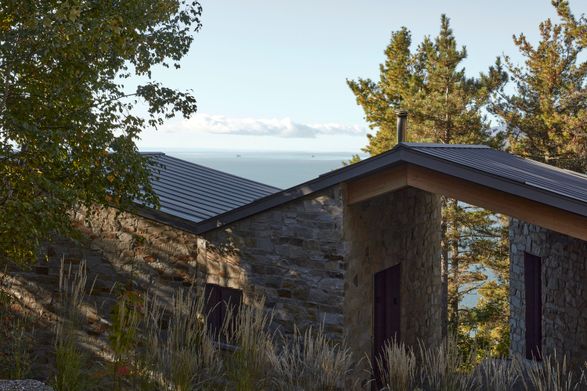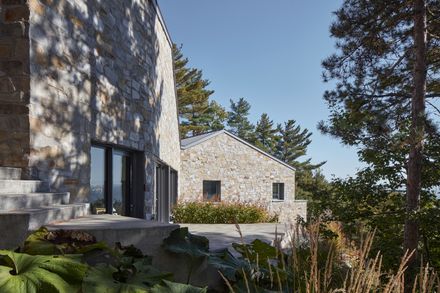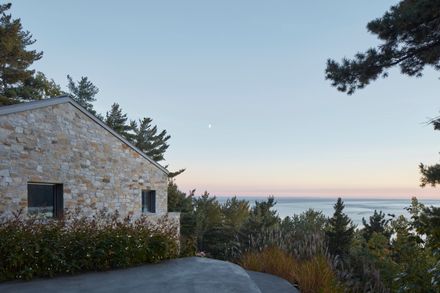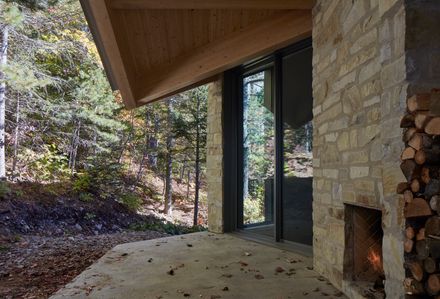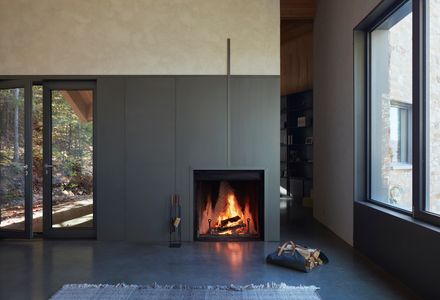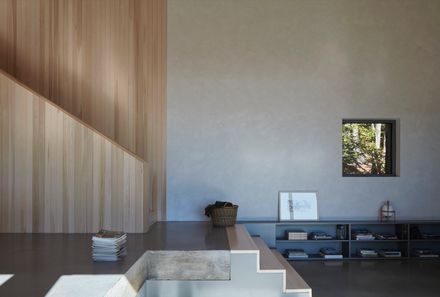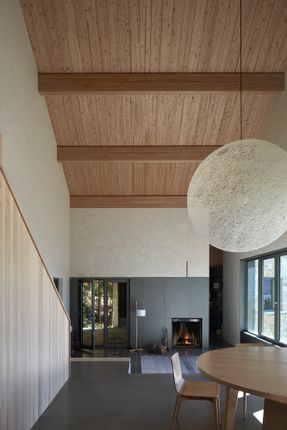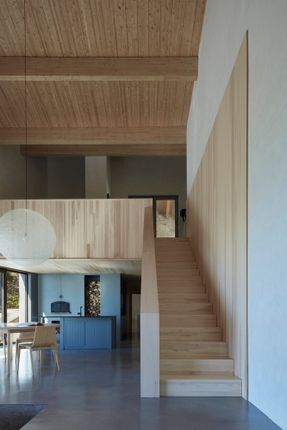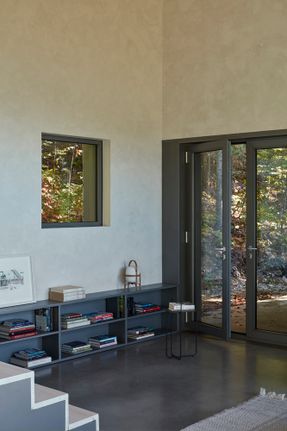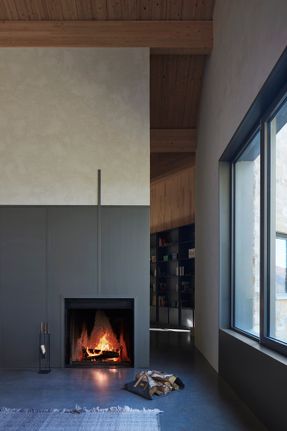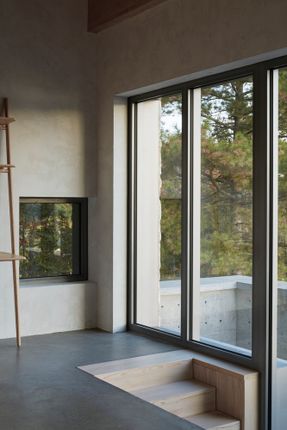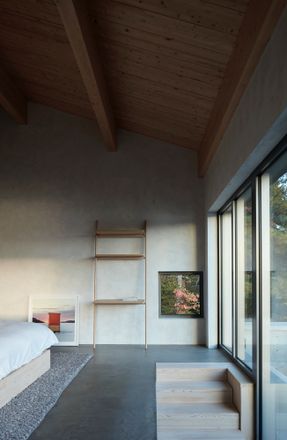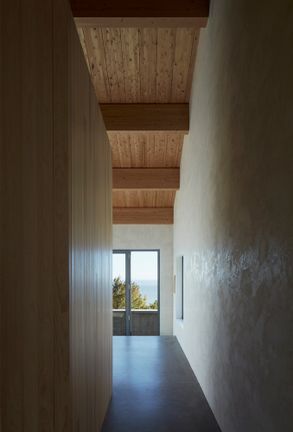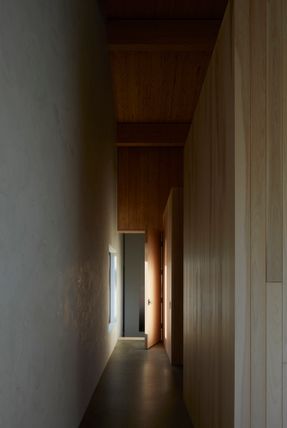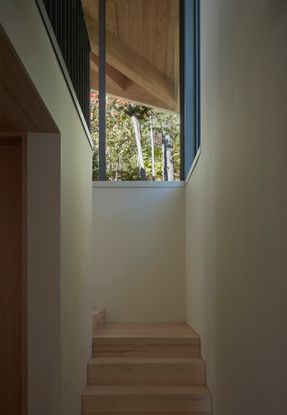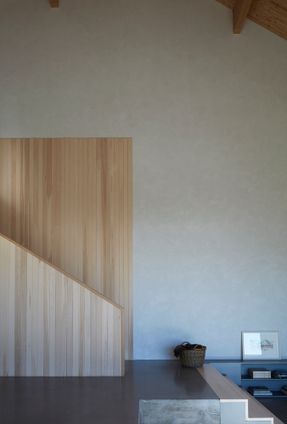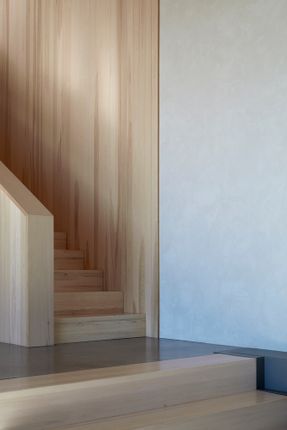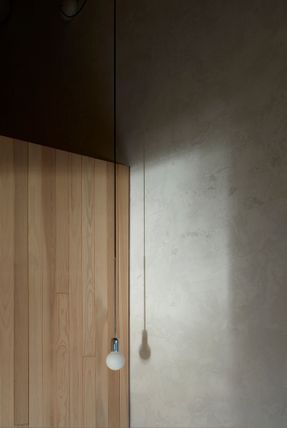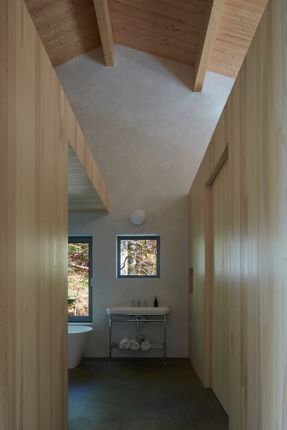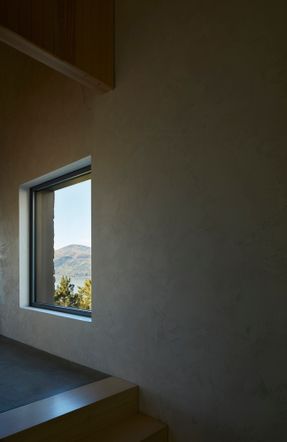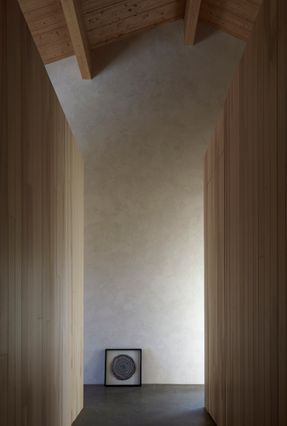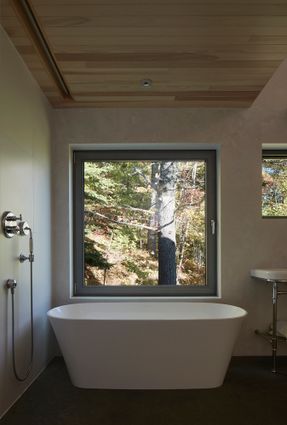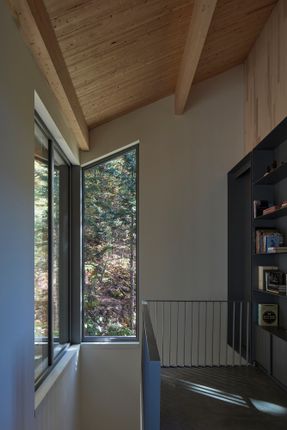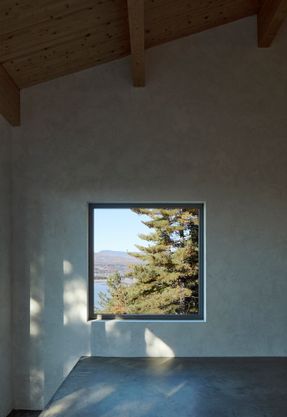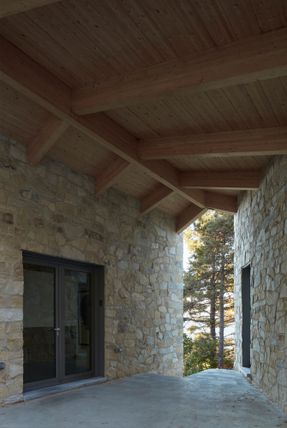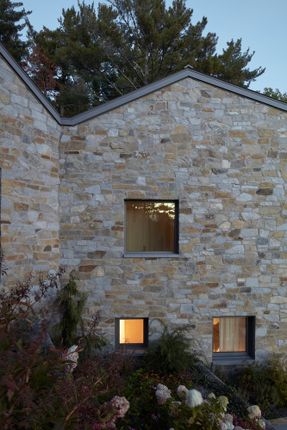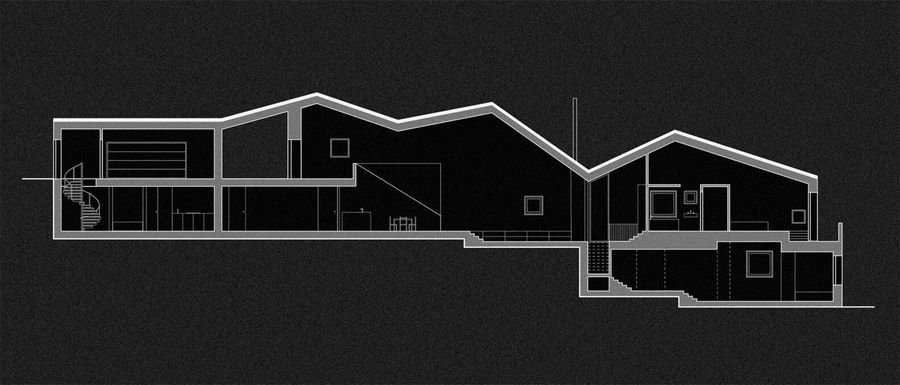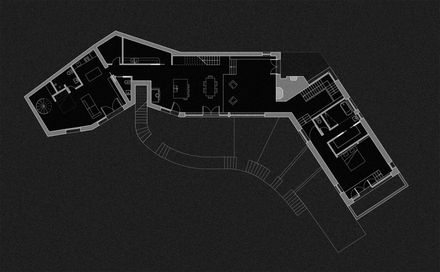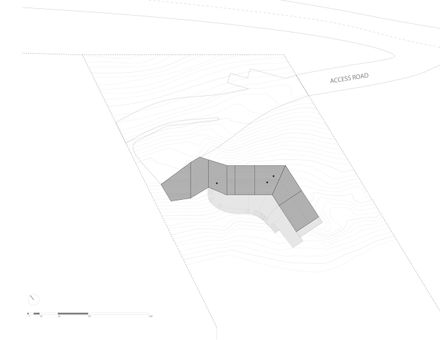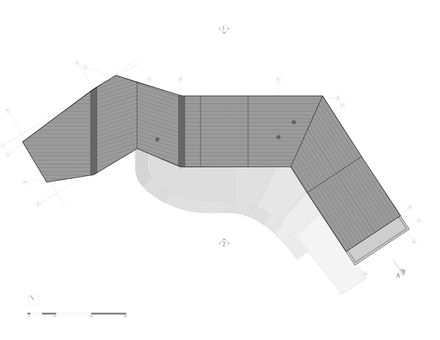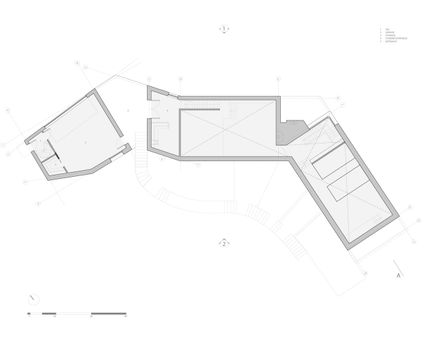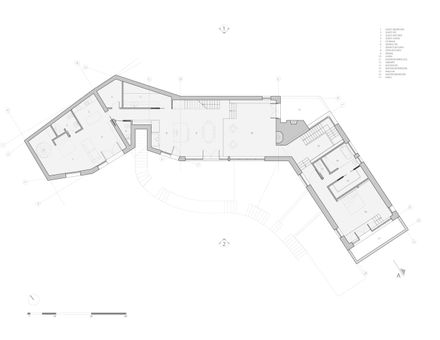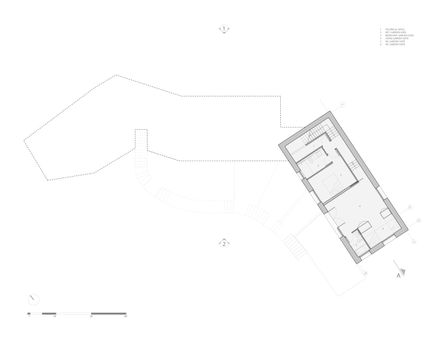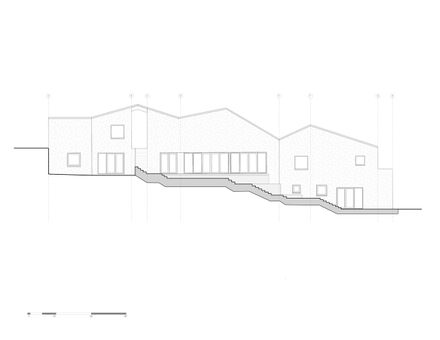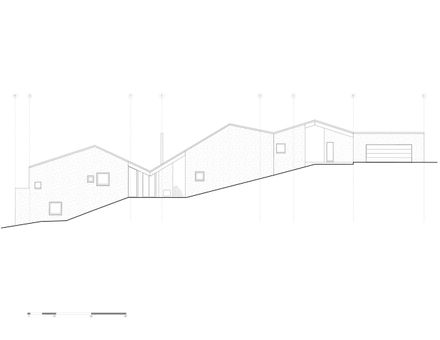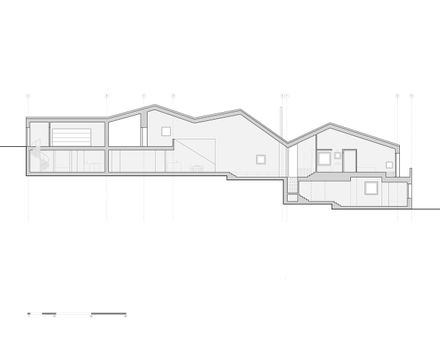CAPO Residence
ARCHITECTS
Atelier Carle
LEAD ARCHITECT
Alain Carle
ROOF STRUCTUR
Art Massif
MASON
Maçonnerie Charlevoix
LIGHTING
Brium
WINDOWS
Shalwi
PROJECT MANAGER
Alexandre Lemoyne
MILLWORK
David Gilbert
PHOTOGRAPS
James Brittain
AREA
290 m²
YEAR
2022
LOCATION
Baie-Saint-Paul, Canada
CATEGORY
Houses
English description provided by the architects.
CAPO: Building along the oblique - The project CAPO, located not far from Baie Saint-Paul in the Charlevoix region of Quebec, proposes an architectural approach that privileges the body's movement in space.
The residence roots itself in the site's specific quality: a rocky cliff, perilous and at the limits of habitability.
The cliff's abrupt slope, dangerous and unstable, offered an opportunity to rethink the design process and to introduce a critical dimension, despite the context of the residential commission, a deepening of our approach to the project.
Critical Context - Focusing on residential architecture, our practice constantly revisits our knowledge in the process of conception and realization, and proposes it as a laboratory of ideas that can influence architectural language in a broader sense, despite the modesty of the interventions.
In contrast to an approach based on programmatic apriorism, the conceptual framework focuses on the sensorial components of the body, as expressed by Pallaasma or Merleau-Ponty, such as the perception or movement in space.
This vision, fundamental to the firm's practice, denotes a critical stance regarding current issues. It privileges the perception of the place in its essential qualities, a perception constituted by a critical and informed eye, from a cultural and environmental point of view.
In the field of high-end residential architecture, contrary to what the media would have us believe, few innovations have truly changed the lifestyles of occupants since the advent of the Free Plan arising from Modernity.
Apart from the decompartmentalization of the kitchen from the visual perception of living spaces, which is more the result of the abandonment of the bourgeois house's structure with servants, the structuring of the family lifestyle, especially in America, has crystallized mainly around the pleasure of being at home.
This characteristic was amplified with time by the technologization of dwelling components, always in a perspective of wellbeing and often in subjugation to architectural language, that which one draws, to assemblies of technical or stylistic considerations.
Our approach thus seeks to refocus the conceptual development around the issues of sensitivity by making use of technology as a support, thereby offering a greater durability to the built work.
Our contribution to sustainable development, in a context as particular as the production of this type of residence, is consequently related to this consideration.
In a broader sense, we believe that the accuracy of the architectural design is based on a sensitive cultural anchoring, perceptible in both the natural and built environment. The technological innovations are instrumentalized according to this perspective and are conjugated in strategic ways to the manner of being of the project. Such innovations, we believe, are transmitted to the way of being of the occupants, which is to say, a more sensitive relationship to the world, such as it offers itself to us. A way of opening up to the otherness of our landscape and, by extension, our cultural environment.
The Project - In keeping with these principles, the CAPO project was an opportunity to subtly divert some of these spatial structures that are so deeply rooted in the culture of contemporary housing by introducing the constraints of the site as a kind of "otherness" affecting the layout of the rooms.
The site's oblique relationship, the rocky cliff outlining the city of Baie-Saint-Paul's bay, offers an opportunity, through the physical constraint or the complexity of executing on such a site, one which reminds us of the author Claude Parent, in his famous book La Condition Oblique...
Developed from the very outset in sections, the project is designed above all according to a pre-existing organic path of circulation on the perilous site, initiating a conceptual logic of pathways rather than an arrangement of rooms derived from programmatic components.
The anchoring of the spaces is done all along this layout, favouring the constant movement of the user from one level to another according to a succession of stairs.
These are deployed in various sequences, in multiple orientations, in order to refine the quality of the journey within the interior and exterior spaces. Movement is thus central, both in its presence in the design of the project and in the diversification of the points of view it provides.
The stairways, according to their amplitude, make it possible to reach the different landings of the site, but also to create a subtle distinction between the adjacent decompartmentalized spaces.
By insisting on the route rather than the program, the project settles into the unstable nature of living with a body that is always in motion, thus steering away from spatial planning according to programmatic layout conventions.
The project is thus fragmented into living areas of varied shapes and orientations, maintaining a certain reciprocity with the surrounding ground while positioning the large panoramic view of the river as one of the points of interest of the site.
In this way, the large panoramic terrace overlooking the St. Lawrence River is complemented by other outdoor spaces with direct access from the interior.
This allows for a certain diversification of the sensorial experience of the site, making it heterogeneous and enriching the continuous relationship of the occupants with the immediate environment.
Ultimately, it relativizes the dominance of the monumental landscape of the river as the only a priori of the site and engages the occupants in a more active relationship with the exterior spaces, despite the perilous nature of the cliff.
The logic of the project's circulation unfolds from the top of the site, where the main access is located, characterized by a loggia opening onto the St. Lawrence River. This loggia allows one to cross the building to access the terraces facing the river, without necessarily entering the building.
Further down the site, at the end of the staircase and exterior terraces, a final space opens onto a natural plateau, surrounded by the cliff and its large century-old pines.
This space connects us to the end of the pre-existing natural path along the site, and constitutes the end of the appropriable domain of the cliff.
Now amplified by the interior and exterior routes running along and through the building on either side, the project, before being a stylistic expression, is above all an extension of a pre-existing oblique route on the site.
The architectural intervention thus maintains this characteristic of the place as the only true mode of appropriation. The program "clings" to this structure of displacement.
Construction - The construction method of this project has a certain specificity. Constructed according to the self-build method by the owners, the building was built slowly, over a long period of time, leaving room for a great deal of design flexibility by consciously integrating the owners into the process.
This situation allowed the owners to question their way of life and to relativize several stereotypes of living. The implementation of the project on the site was done in a progressive and delicate way, thanks to the use of insulating formworks allowing a sequence of successive pours.
Given the difficulty of appropriating this site where no trees could be cut down, the choice of this construction technique ensured that the landscape characteristics were maintained both immediately after construction and over time.
This robust construction method allowed the use of stone masonry to anchor the architectural expression to the rocky quality of the site. Assembled in a rustic manner, the format and type of assembly were chosen to meet the site's installation constraints, a relatively malleable module in the precarious cliff context.
Conceived almost as a succession of small hills cascading down the cliff, the resulting volumetry of the circulation layout refers to the great landscape of the Charlevoix coast, where the organicity of the rural constructions of the last century is superimposed on the dizzying rusticity of the territory.

